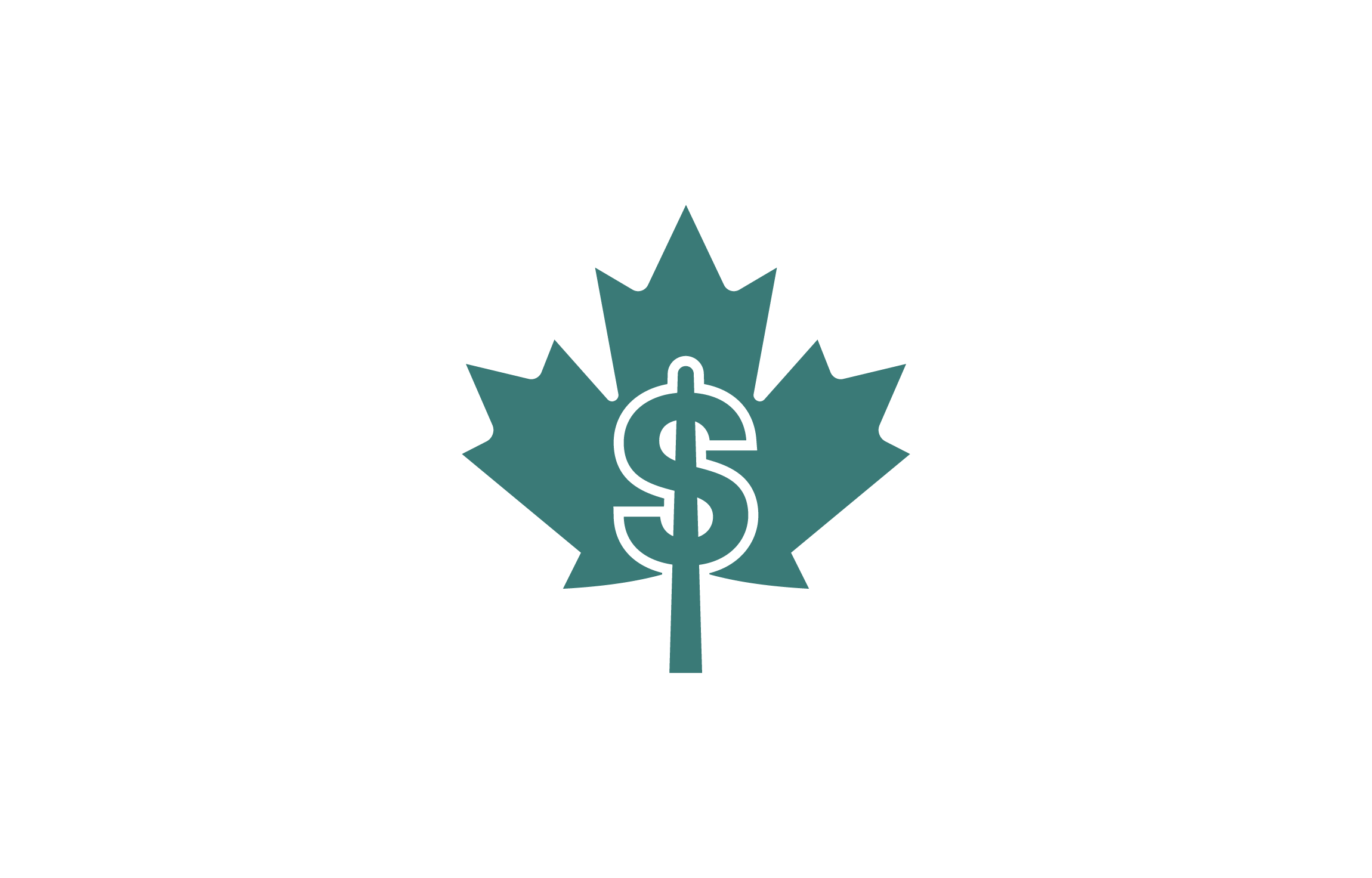Canada is a beautiful country with great potential. It is also one of the most diverse countries in the world and home to people of different beliefs, religions, and lifestyles. Canada boasts of several developments and beautiful landscapes in both the cities and the countryside. What is the cost of living in this highly progressive country? Let’s delve in!
Canada is often ranked high in the United Nations annual Human Development Index (HDI) which combines the measurement of life expectancy, education, and per capita income. As a result of the country’s strong and viable economy, it’s expected that a lot of people from different parts of the world love to visit and settle in the Great White North.
Despite its British affiliation and European background, Canada welcomes people from all walks of life annually, to its provinces and territories. Some immigrants coming into Canada have discovered that the cost of living in Canada is much lower compared to their home country.
Of course, this does not count for all situations, as there are some situations where the cost of living in Canada might be higher than in other countries, depending on some factors. However, the cost of living in Canada varies from province to province, and city to city, as no two provinces or cities have the same living conditions.
Note: This post was first published in 2020, updated in December 2021, and will be occasionally updated to reflect current costs.
What is the Average Cost of Living in Canada?
The cost of living in Canada varies, and as such is a factor of where you decide to reside or settle. An individual residing in a major Canadian city will not incur the same expenses as someone else residing in the remote countryside.
In the same manner, the cost of living in Canada depends on how you are able to adapt and familiarize yourself with your new home quickly. You would need to work and live within your means, hence the need for a budget.
This guide is designed to put you at a vantage position while determining which province, city, region, or territory fits your lifestyle or one where you can afford to live comfortably.
We offer you detailed information on each of the twelve Canadian provinces and territories in terms of their cost of living, to help you make an informed decision in your choice of residence or location.
Cost of Living in Canada
Before we dive into the specifics, why don’t we first discuss the average cost of living in Canada? Overall, the average cost of living in Canada is around $1702 for one person or $3911 for a family of four. This includes the cost of the rent.
If we were to deduct rental costs, the average individual in Canada could live for around $736. A family of four could expect to live off of $2323 without rent.
These average costs not only take into account the cost of rent, but also the cost of food and transportation. If you own a vehicle, you can expect these costs to be higher than if you are willing to take public transit, as you will have to make your car payment, pay for insurance, and the cost of gas.
If you are making your own budget, you will also want to factor in the cost of entertainment. This can vary greatly depending on your individual needs.
Rent and Housing Costs in Canada
The cost of buying a house or renting a home in Canada depends on the size of the house, location, age of the house, and condition of the house or apartment. The cost varies from province to province, and city to city.
Renting Apartments in Canada
The Canada Mortgage and Housing Corporation (CMHC), through its annual report, gives the average rent in Canada for each year. Based on this report, rent costs are higher in urban areas compared to less populated or developed areas.
The average rent price is $2730 per month and it cuts across Canada. It has been predicted that this price will continue to increase drastically.
The majority of Canadians spend up to 50 percent of their income on housing and utilities like electricity, water, heating of the house, telephone service, and other household expenses like furniture, utensils, dishes, and other supplies.
For anyone who intends to settle in any Canadian province, it is crucial to plan your rent or home purchase based on your estimated income. The number of years that a highly skilled worker will take to afford an apartment in a developed city like Vancouver is different from what it will take another skilled worker in Quebec to afford the same size of an apartment.
Rents Affordability in Selected Cities
| City | 1 Bed (month) C$ | 2 Bed (month) C$ |
| Windsor | 1250 | 1611 |
| Saskatoon | 942 | 1,090 |
| Regina | 936 | 1,133 |
| Montreal | 1508 | 1,920 |
| Edmonton | 1028 | 1,263 |
| Winnipeg | 1148 | 1,476 |
| London | 1,292 | 1,630 |
Source: Rentals.ca
Buying a House in Canada
The average cost of a Canadian house was predicted to rise up to $686, 650 from the previous $531, 000 price of 2020. The increasing price of houses in Canada is a result of various tax measures, interest rates, and mortgage regulations. The provinces of Ontario and British Columbia are, in particular, projected to witness much of the growth of the housing price increase.
If you are purchasing a house in Canada, you will most likely need a mortgage loan from banks and other credit institutions. These financial agencies will assess your income, assets, as well as your credit scores to decide if they will give you a mortgage and how much they are able to lend out.
Also, most banks ask for an initial downpayment of at least 5% or up to 10% of the house price. Coupled with this cost, you are obliged to pay for your property tax as well as other necessary fees.
House Prices based on Major Cities and Provinces
| City | Average House Cost (C$) |
| Vancouver | $1,174 000 |
| Toronto | $1, 136, 280 |
| Calgary | $460, 100 |
| Winnipeg | $364, 817 |
| Montreal | $500, 250 |
| Halifax | $471, 746 |
| Regina | $335, 656 |
| Moncton | $290, 949 |
| Province | Average House Cost (C$) |
| British Columbia | $913, 471 |
| Ontario | $887, 290 |
| Alberta | $401, 705 |
| Quebec | $459, 955 |
| Manitoba | $321, 504 |
| Saskatchewan | $286, 600 |
| Nova Scotia | $356, 757 |
| Newfoundland and Labrador | $321, 700 |
| Prince Edward island | $335, 202 |
| New Brunswick | $262, 200 |
Source: Canadianrealestatemagazine
Average Cost of Public Transportation in Canada
Following Russia closely is Canada in the second position among the largest countries in the world by area. As a result, you definitely will need to move from one place to another using a means of transportation. Many Canadians have cars that they must maintain, pay insurance for, and keep in working condition.
The majority of Canadian residents use public transportation, bike, or walk. The cost of public transportation is a bit expensive in Canada. The actual cost depends on your municipality. For instance, a typical subway fare in Toronto is around $3.25 paid by cash, ticket, or a monthly pass like the PRESTO Card.
You would need to purchase a monthly pass for the public transit services in your municipality.
Fare-Free Transit in Canada
There has been a debate about the pros of having a fare-free public transportation system in Canada. Proponents of this discourse on the fair fare and fare-free transit like it to other public services, and believe that it will make life better for the citizens socially, democratically, globally, and ecologically.
Cost of Food in Canada
Canada is home to people with different ethnic origins and cultural beliefs, some of which are Scottish, French, English, German, Chinese, Irish, and of course, Canadian. Living in a country that embraces these diverse cultures, having different types of international cuisine is inevitable.
The price of food in Canada varies widely within provinces and cities. It is believed that provinces like Quebec, New Brunswick, NewFoundland and Labrador, and Nova Scotia spend less on food. On the contrary, provinces like Alberta, Saskatchewan and British Columbia tend to pay higher on food costs.
According to data by Global News’ analysis of Statistics Canada, Canadians spend an average of around $200 a month per person on food bought in stores.
As a result of the expensive nature of produce and dairy products, many Canadians turn to junk foods. Lots of Canadians tend to eat outside their home to get a decent meal. For instance, getting a decent meal in an Italian restaurant for two people in an urban area – appetizer, main course, dessert, and wine – will cost around $100 in Vancouver, $90 in Montreal, $74 in Quebec, $101 in Calgary, and $105 in Toronto.
If you cook your food yourself, you would definitely spend less than a person who eats out. Groceries for a family of two would cost around $400 per month if they’re conservative.
Cost of Living in Canada by City
Equipping yourself with information on which provinces or territories are affordable to live in will help you to decide your next destination. Although some urban cities in Canada are quite expensive to live in, there are also some great, livable areas that are cheaper to live in, either as an individual or as a family.
Let’s take a look at some of the largest cities in Canada and see how they compare:
| Urban area/city | Cost of living (Single) | Cost of living (family of 4) | Price index |
| Thunder Bay, Ontario | 1415 | 3192 | 121 |
| Moncton, New Brunswick | 1,279 | 2,721 | 124 |
| Quebec City, Quebec | 1,244 | 2,984 | 126 |
| Kitchener-waterloo, Ontario | 1, 542 | 3,584 | 127 |
| Guelph, Ontario | 1,916 | 4,276 | 128 |
| Kingston, Ontario | 1,558 | 3,933 | 132 |
| London, Ontario | 1,564 | 3,668 | 133 |
| Charlottetown, Prince Edward Island, | 1,409 | 3,039 | 134 |
| Abbotsford, British Columbia, | 1,432 | 3,481 | 135 |
| Winnipeg, Manitoba | 1,540 | 3,483 | 137 |
| Halifax, Nova Scotia | 1,625 | 3,652 | 138 |
| Barrie, Ontario | 1,454 | 3,411 | 142 |
| Kelowna, British Columbia | 1,678 | 3,950 | 143 |
| Edmonton, Alberta | 1,669 | 3,694 | 143 |
| Oshawa, Ontario | 1,435 | 3,164 | 146 |
| Ottawa, Ontario | 1,808 | 4,094 | 153 |
| Victoria, British Columbia | 1,775 | 3,985 | 154 |
| St. John’s, New Foundland and Labrador | 1,446 | 3,342 | 154 |
Source: Living Cost
Cheapest Cities to Live in Canada
Like anywhere else in the world, Canada has some cities that are very expensive to live in. They also have some cities that are more affordable. Here are 5 of the cheapest cities to live in Canada:
- Kingston, Ontario
Located between Toronto and Ottawa, Kingston is the perfect place for anyone moving to Canada. The city is large enough to boast its own restaurants, bars, and entertainment facilities, and has plenty of job opportunities. It’s also one of the most affordable cities to live in Canada, with the average house costing around $463, 993.
The average person in Kingston can live on $1558, including rent which averages $898.
- Edmonton, Alberta
Most capital cities top the list of the most expensive cities to live in Canada, but Edmonton isn’t one of them. In fact, Edmonton makes the list of the cheapest cities to live in Canada. Even less expensive than Kingston, the average cost of a house in Edmonton is around $362, 447. There are also plenty of job opportunities within the city, so living here is an attractive option for many.
The average person in Edmonton can live on $1669 per month, including rent which averages $891.
- Halifax, Nova Scotia
Nova Scotia is one of the most desirable provinces in Canada with a small maritime feel. It is surrounded by water, parks, nature, and wildlife which makes it a very popular choice for those who enjoy a community vibe. Halifax is one of the largest cities in Nova Scotia, but also one of the cheapest to live in Canada. The average cost of a house in Halifax is only $291 224.
The average person in Halifax can live off of $1624 per month, including rent which averages $887.
- Regina, Saskatchewan
Saskatchewan is one of the smaller provinces in Ontario. Regina, which is one of the largest cities in Saskatchewan, only has a population of 228, 928. Because Regina has such a small population, it’s one of the most affordable places to live in Canada. The average cost of a house in Regina is only $271, 000.
The average person in Regina can live off of $1457 per month, including rent which averages $797.
- St Johns, Newfoundland
If you’re looking for a more remote place to live, St. Johns, Newfoundland is one of the most remote places in Canada. Located on an island, the only way to get to Newfoundland is by boat or plane.
With that being said, St. Johns, Newfoundland is surrounded by natural beauty and is considered one of the most beautiful places in all of Canada. If you like the feel of community, you can buy a house in St Johns for as little as $298, 561.
The average person in St. Johns can live off of $1446 per month, including rent which averages $731.
Most Expensive Cities to Live in Canada
On the opposite end of the spectrum, there are also some very expensive places to live in Canada. Here are 5 of the most expensive cities to live in Canada:
- Vancouver
Vancouver has long been listed as the second most expensive city to live in Canada next to Toronto. But more recently, Vancouver has moved to the top of the list. Now the number one most expensive city to live in Canada, Vancouver is also the 93rd most expensive city in the world. It’s estimated that the average person requires $1, 195.52 per month to live, and that’s without paying rent.
A one-bedroom apartment in Vancouver will cost you around $2, 071.29.
- Toronto
Toronto is one of the most beautiful cities in Canada and is a multi-cultural epicenter. Home to a variety of different ethnicities and cultures, Toronto welcomes everyone to its hustling and bustling world. But if you want to join the crown in Toronto, you’re also going to pay for it. Without rent, the average person is looking at spending $1, 223.56 per month just to live.
Tack in rent and you’re looking at an additional $2000.14 for a one-bedroom apartment.
RELATED: Cost of Living in Toronto Canada
- Montreal, Quebec
An epicenter of arts and culture, you will never run out of things to do in Montreal. Montreal has thousands of restaurants, bars, and entertainment venues, making it a popular destination for young travellers, tourists, and those who seek the big city lifestyle.
But like many of the big cities in Canada, living in Montreal comes with a hefty price tag. Though it is cheaper than Toronto and Vancouver, the average person will still need around $1102.23 just to live, without rent. Rent will cost an additional $1, 281 on average, and that’s just for a one-bedroom.
- Calgary, Alberta
While Edmonton made it on the cheapest cities list, Calgary is the exact opposite. With over 1.4 million people in the city, Calgary has a lot of diversity and competition. With that being said, there are also plenty of career opportunities and options for making a high wage. This makes it attractive for many newcomers looking to start a fresh career.
The average person in Calgary can expect to live off of around $1, 176.93 per month without rent. Rent is, on average, $1, 281. 74 for a one-bedroom apartment.
- Ottawa, Ontario
Ottawa is the capital city of Ontario. One of the largest cities in the province, it also comes with many work opportunities, making it a popular landing destination for many.
An inner-city is a great place for young singles, and many older generations enjoy the suburbs that Ottawa has to offer as well. Parliament Hill and the Rideau Canal are two major attractions that bring people to Ottawa.
But if you want to live here, you’ll pay a hefty price tag. Though it’s not the most expensive city in Canada, Ottawa will cost a single person around $1,196.92 per month without rent. If you add rent, you’re looking at an additional $1, 628.85.
RELATED: Cost of Living for International Students in Canada
Cost of Living in Canada by Province
In Canada, there are ten provinces and three territories. The cost of living is calculated by accumulating the cost of rent, utilities, food, transportation, health, taxes, and other expenses PER INDIVIDUAL.
Canadian Province with the Lowest Cost of Living
When speaking about the overall cost of living, we must factor in a variety of different things including rent, costs of food, transportation, clothing, and entertainment. When we combine all of these things, the province in Canada with the lowest cost of living is New Brunswick.
There are many different reasons that may factor into this, but the main one is the employment rate. Unlike other areas in Canada that offer bustling economies, the job prospects in New Brunswick are much lower. That doesn’t mean that you can’t find a great job, it simply means that you may have to work harder to find one, or may have to commute to your job.
If you are able to find a great job, New Brunswick can be a great place to settle down. Aside from the beautiful scenery that New Brunswick has to offer, you can also live very affordably. On average, it only costs a single person about $1369 to live in New Brunswick (for a month), and that’s including rent.
Not only that, but if you are looking to buy your own home, New Brunswick is a very viable option. Here, the average cost of buying a home is only $262, 200. Compare this to British Columbia or Ontario, where the average house is over $800, 000, and that’s a great deal.
Canadian Province with the Highest Cost of Living
Okay, now let’s take a look at the other end of the spectrum. The province with the highest cost of living in Canada is Ontario. In Ontario, the average person needs a base salary of $1887 to live. This includes transportation, rent, and food.
In Ontario, the average price of buying a house is $887, 290. If you purchase a house in the city, this budget will allow you to own, but probably won’t allow you to buy your dream home. If you want a very nice house for $800, 000 or less, you’ll have to look in smaller cities, towns, or suburbs.
With all of that being said, if job opportunity is what you crave, Ontario is where you want to be. Big cities like Toronto offer endless opportunities for work. And because Canada is so multicultural, there is no room for discrimination. Anyone who works hard can easily find a sustainable job or career.
Canadian Cities with the Highest and Lowest Costs of Living
Alberta
Alberta is a Canadian province and the most westerly of the three prairie provinces. The province is often referred to as the energy province of Canada due to its leadership in the oil and gas industry and a fast-growing economy.
The major cities in Alberta are Calgary (the largest city) and Edmonton (the capital city of Alberta province). The province has high labor demands and low levels of unemployment which translates to higher family income and low cost of living than other provinces.
Average Cost of Living in Alberta per person
Rent: C$1669/month
Groceries: C$200-300/ month
Public Transport: C$103/month
Entertainment: C$253
The City with the Highest Cost of Living in Alberta
Calgary – Calgary is the largest city in Alberta. The city borders British Columbia in the west, Saskatchewan in the east and Northwest Territories in the north, and the United States.
The city has a population of over one million people and has the highest cost of living in the province. Calgary is the fourth most expensive city in Canada, more expensive than 78% percent of cities in the world.
The City with the Lowest Cost of Living in Alberta
Brooks – This is a city in the southeastern part of Alberta. It has a 1-percent less than the national average cost of living. Also, the cost of living in brooks is a lot cheaper than the cost of living in Calgary and any other city in Alberta.
British Columbia
This is the most westerly of all Canadian provinces and a popular destination for immigrants. The province has about 52 cities, with Vancouver and Greenwood being the largest and smallest respectively. British Columbia has a population of over five million people, making it the third-most populous province behind Ontario and Quebec.
Average Cost of Living in British Columbia
Rent: C$2034/month
Groceries: C$514/month
Public Transport: C$101/month
Entertainment: C$240
The City with the Highest Cost of Living in British Columbia
Vancouver – Until recently, Vancouver held the number two position of the most expensive city in Canada, second only to Toronto. The city has now made it to the top position, listed as the most expensive city to live in Canada.
The City with the Lowest Cost of Living in British Columbia
Abbotsford – With 3 percent less than the national average cost of living, Abbotsford is the cheapest, largest city in BC. The cost of living in Abbotsford is 17 percent cheaper than Vancouver’s.
Manitoba
This Canadian city shares a border with Ontario and Saskatchewan. The province is seen as having a strong and stable economy, and a low cost of living in Canada. Canada’s fifth-most populous province has over one million residents.
Average Cost of Living in Manitoba
Rent: C$1523/month
Groceries: C$466/month
Public Transport: C$100/month
Entertainment: C$195.61
The City with the Highest Cost of Living in Manitoba
Winnipeg – This is the capital and largest city in Manitoba. It has 10 percent higher than the national average cost of living.
The City with the Lowest Cost of Living in Manitoba
Winkler – This is a small city in southern Manitoba and the sixth-largest city in the province. It is a regional hub for agriculture, industry, and commerce. The city has a 6 percent cost of living less than the national average, making it one of the most affordable in Canada.
New Brunswick
This is one of the four Atlantic Provinces. It is a mixture of Anglophone and francophone residents. Its largest city is Moncton. New Brunswick has a 6 percent cost of living less than the national average.
Average Cost of Living in New Brunswick
Rent: C$1369/month
Groceries: C$513 /month
Public Transport: C$80/month
Entertainment: C$214
The City with the Highest Cost of Living in New Brunswick
Fredericton – The capital city of New Brunswick has a 3 percent cost of living higher than the national average. It is the third-largest city in the province behind Saint John and Moncton.
The City with the Lowest Cost of Living in New Brunswick
Campbellton – This is a city of less than ten thousand in population. Its economy strives mainly on forestry and tourism. The city has a 6 percent cost of living less than the national average. Rent, food, and groceries are a lot cheaper in Campbellton than in Fredericton and other cities in the province.
Newfoundland and Labrador
This is the easternmost province of Canada. The province is made up of Newfoundland (island) and Labrador (mainland). It has a 16 percent cheaper cost of living than in Toronto.
Average Cost of Living in Newfoundland and Labrador
Rent: C$1463/month
Groceries: C$582
Public Transport: C$86/month
Entertainment: C$159
The City with the Highest Cost of Living in Newfoundland and Labrador
Happy Valley-Goose Bay – This city is in the central part of Labrador and has a 15 percent higher cost of living compared to the national average. Rent prices are over 70 percent high in the Happy Valley-Goose Bay than in Saint John’s, the capital city.
The City with the Lowest Cost of Living in Newfoundland and Labrador
Cornerbrook – This is located on the Bay of Islands. The city is the second-largest population in the province behind Saint John’s. Cronerbrook has a 2 percent cost of living higher than the national average.
Nova Scotia
The cost of living in Nova Scotia is 3 percent less than the national average which makes it one of the most affordable provinces in Canada.
Average Cost of Living in Nova Scotia
Rent: C$1595/month
Groceries: C$507
Public Transport: C$80/month
Entertainment: C$217.5
The City with the Highest Cost of Living in Nova Scotia
Halifax – This is the economic center for Canada’s important port. The city has a 9 percent cost of living above the national average. The cost of living in Halifax is cheaper than in 67 percent of cities in Canada.
The City with the Lowest Cost of Living in Nova Scotia
Yarmouth – Located in the heart of the largest lobster fishing ground, the city has a 7 percent cost of living less than the national average.
Ontario
The Ontario province is Canada’s most populous province and the second largest in landmass. Ontario has a 5 percent cost of living higher than the national average.
Average Cost of Living in Ontario
Rent: C$1877/month
Groceries: C$489
Public Transport: C$115/month
Entertainment: C$275
The City with the Highest Cost of Living in Ontario
Toronto – The capital of Ontario has a 35 percent cost of living above the national average. It is ranked as the second most expensive city in Canada and is 71 percent more expensive than cities in North America.
The City with the Lowest Cost of Living in Ontario
Windsor – This is a city in southwest Ontario and the third most populated city in southwest Ontario. The city has a 1 percent cost of living higher than the national average. The cost of living in Windsor is 27 percent cheaper than in Toronto.
RELATED: Cost of Living in Ontario Canada
Prince Edward Island
This province is one of eastern Canada’s Maritime Provinces. It is the smallest Canadian province in terms of landmass and population. The province has a 1 percent cost of living higher than the national average.
Average Cost of Living in Prince Edward Island
Rent: C$1409/month
Groceries: C$490
Public Transport: C$58/month
Entertainment: C$240
The City with the Highest Cost of Living in Prince Edward Island
Charlottetown – The capital city of the province has a 0 percent cost of living to the national average, making it one of the most affordable places to live in Canada.
The City with the Lowest Cost of Living in Prince Edward Island
Summerside – This is a Canadian city in Prince County and the second-largest city in the province. The city has a 3 percent cost of living less than the national average. Rent is 43 percent lower in Summerside than in Charlottetown.
Quebec
This is Canada’s largest province by landmass and part of central Canada along with Ontario. Its largest city is Montreal.
Average Cost of Living in Quebec
Rent: C$1602/month
Groceries: C$476
Public Transport: C$81/month
Entertainment: C$210
The City with the Highest Cost of Living in Quebec
Montreal – The third cheapest city in Canada with a 94 percent cost of living cheaper than cities in North America. It has a 24 percent cost of living higher than the national average.
The City with the Lowest Cost of Living in Quebec
Sherbrook – This is a city in the southern part of Quebec, noted for its natural attraction and heritage sights. It has a 13 percent cost of living less than the national average. The cost of living in Sherbrook is 13 percent cheaper than in Montreal.
Saskatchewan
Saskatchewan is a prairie province in Western Canada. The city is known for its architecture and the beautiful stone of its Usask campus. Did you know that Saskatchewan is home to over 100,000 lakes?
One of the most unique lakes in the world is located in Saskatchewan. It’s called Manitou Lake located southeast of Saskatoon. Saskatchewan has a 4 percent cost of living higher than the national average.
Average Cost of Living in Saskatchewan
Rent: C$1507/month
Groceries: C$498
Public Transport: C$86/month
Entertainment: C$224
The City with the Highest Cost of Living in Saskatchewan
Saskatoon – This is the largest city in the province. The cost of living in Saskatoon is about 14 percent higher than the national average.
The City with the Lowest Cost of Living in Saskatchewan
Yorkton – This is a city in the southeastern part of the province and the sixth-largest. The city has a 2 percent cost of living higher than the national average. Compared to Saskatoon, the cost of living is cheaper in Yorkton.
Cost of Living in Canada from 2015-2021
| 2018 | 2019 | 2020 | 2021 | |
| Toronto | $2,740.48 | $3,214.39 | $3,783 | $3,740 |
| Vancouver | $2,795.64 | $2,929.76 | $3,391 | $4,086 |
| Calgary | $2,169 | $2,480 | $2,825 | $3,538 |
| Montreal | $1663.75 | $2,370.63 | $2,383 | $2,627 |
As you can see, the average cost of living in Canada has risen drastically over the past 5 years. More specifically, inflation rates have significantly increased since the beginning of the Covid 19 pandemic. This is for many reasons but is mainly because of supply constraints.
The lack of supply availability in Canada has increased the cost of everything, from gas to wood, to building supplies, and food expenses. Economists do believe that inflation rates may continue to rise through 2022, but will eventually fade off into the sunset.
RELATED: Cost of Buying Food in Canada by Province
Summary
This is one of the most practical and detailed guides on the cost of living in Canada. With this, you would be able to make informed decisions about your choice of location within any of the Canadian provinces.














2 thoughts on “Cost of Living in Canada by Province”
There is no way anyone in Calgary spends only 115$ a month on groceries unless they are eating out all the time, which would then fall under entertainment, which also seems very low, but then again these numbers are during covid times..
I agree, no one in Calgary pays this much, however, it honestly depends, even when I used to live in British Columbia our groceries were about the same but after moving to Calgary our groceries seem a little lower than before.